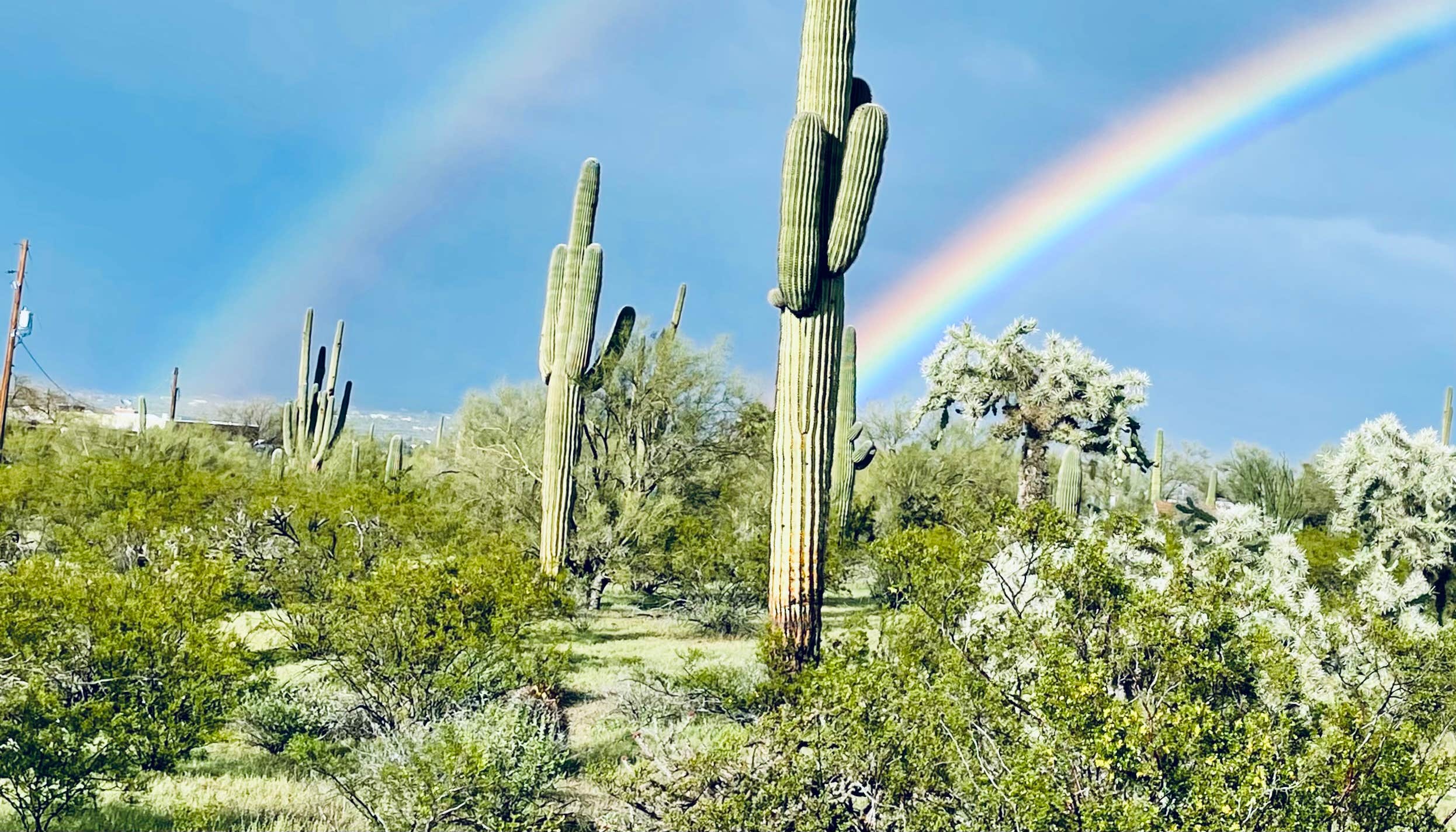Saguaro National Park Complete Camping Guide
Saguaro National Park offers a unique desert camping adventure split between two districts flanking Tucson. Unlike many national parks, Saguaro has no drive-in campgrounds - all in-park camping takes place in six designated wilderness campgrounds accessible only by hiking. During peak spring and fall seasons, backcountry permits are readily available through a rolling reservation system via Recreation.gov. Summers bring extreme heat and dangerous storms, making them the least popular time to camp. Winters stay mild in the desert lowlands but bring snow to the high elevations. Nearby camping near Saguaro National Park and RV parks around Tucson provide convenient front-country options including RV camping with hookups, tent camping sites, and cabin rentals for those not up for backpacking. This guide covers everything you need to plan and enjoy camping in and around Saguaro National Park, from permit logistics and seasonal considerations to the best trails, safety tips, and insider advice for an unforgettable desert camping adventure.
Saguaro National Park Camping at a Glance
All Saguaro National Park campgrounds require wilderness permits for backcountry camping - the park contains no developed, drive-in campgrounds. During peak spring and fall seasons, backcountry permits (required for all overnight stays) are readily available on a rolling reservation system via Recreation.gov. Summers bring extreme heat and dangerous storms, making them the least popular time to camp. Winters are mild in the desert lowlands but bring snow to the high elevations. For 2025, all six backcountry campgrounds remain open with no closures. Gilbert Ray Campground near the west district now operates on a reservation-only system via Pima County.
Backcountry permits cost $8 per campsite per night via Recreation.gov, with a rolling reservation window generally 1-2 months in advance. Most dates remain available except major holidays. Winter days reach 65-75°F with nights in the 40-50°F range at low elevations, while summer days climb to 100-110°F in the desert (though high-elevation camps stay in the 70s°F). Summer nights remain warm at 75°F in the desert but drop to the 50s°F in the mountains.
Saguaro National Park Campground Quick Facts
| Quick Facts | Details |
|---|---|
| Number of Campgrounds | 6 backcountry campgrounds (20 total sites) in Saguaro Wilderness; No developed front-country campgrounds in park |
| Total Campsites | 20 designated wilderness campsites (Manning Camp has 6; others have 2-3 each) |
| Campsite Permit Cost | $8 per campsite per night (backcountry permit fee) via Recreation.gov |
| Reservation Window | Rolling release, generally 1-2 months in advance on Recreation.gov; most dates available except major holidays |
| Camping Seasons | Year-round backcountry camping (spring and fall preferred) Low-elevation sites best in winter High-elevation sites offer summer relief |
| Temperature Ranges | Winter days 65-75°F, nights 40-50°F (low elevation) Summer days 100-110°F (desert), 70s°F (mountains); nights 75°F (desert), 50°F (mountains) |
| 2025 Updates | All six backcountry campgrounds open (no closures) Gilbert Ray Campground now reservation-only via Pima County |
Saguaro Campgrounds: Complete Guide
Rincon Mountain District Backcountry Campgrounds (East)
Douglas Spring — Saguaro National Park
Douglas Spring Campground sits at 4,800 feet in the Rincon Mountain foothills, reachable via a 6.3-mile hike from the Douglas Spring Trailhead at Saguaro's east boundary. This campground's 3 sites occupy a desert grassland dotted with mesquite and oak, offering broad views of Mica Mountain's slopes. A vault toilet is available, but no reliable water (a nearby spring flows only seasonally), and campfires are prohibited here. Douglas Spring is a popular first-night stop for backpackers and is ideal for winter camping when higher sites are snowed in.
Grass Shack — Saguaro National Park
Grass Shack Campground lies at 5,200 feet on the south side of the Rincons along the Arizona Trail, about 10 miles by hike (via Hope Camp or Manning Camp trails). Its 2 sites sit under large oak and sycamore trees that provide welcome shade. A seasonal creek (Chimenea Creek) often flows nearby for water (treat before drinking). A vault toilet is on-site. No campfires are allowed at Grass Shack due to the dry environment. Campers enjoy fantastic views of saguaro-studded hillsides and open grasslands to the south. This quiet spot is a favorite spring and fall camping destination.
Juniper Basin — Saguaro National Park
Juniper Basin Campground is perched at 6,000 feet along the Tanque Verde Ridge, 6.9 miles up from the Javelina Picnic Area trailhead. Its 3 sites are set among scattered juniper and oak trees with 360-degree desert and mountain views. A vault toilet is provided. Water is seasonal - occasional rain-fed pools may collect in rock basins nearby, but often it's dry (especially late spring/fall). Campfires are allowed here using only dead-and-downed wood (when no fire bans in effect). Juniper Basin's panoramic setting makes it a rewarding but demanding backpacking destination, showing the transition from cactus desert to pine-oak woodland.
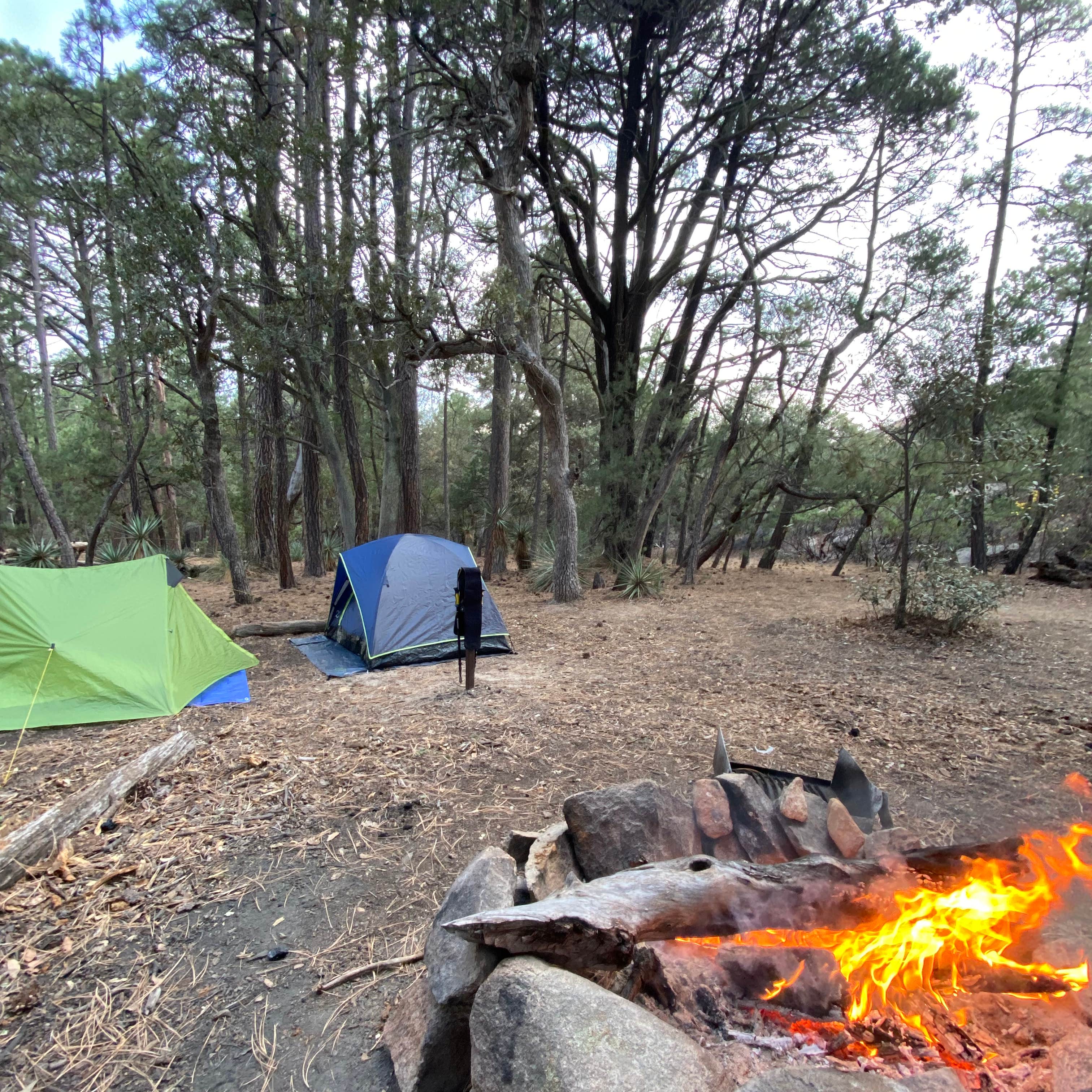
Happy Valley Saddle Campground — Saguaro National Park
Happy Valley Saddle Campground sits in a forested saddle at 6,200 feet near the eastern park boundary. Reached via a 4.1-mile hike up the Miller Creek Trail (requiring a rough dirt road drive to the trailhead), this campground's 3 sites are shaded by pines and alligator junipers. A vault toilet is available. Water is very scarce - small springs might flow only after wet winters or monsoons, so plan to pack in all water. Campfires are generally permitted here (check for fire restrictions) but there are no established fire rings. Many backpackers use Happy Valley Saddle as a base camp to summit Rincon Peak (4 miles further) or as a midway point on longer Rincon treks. Beautiful eastward views and solitude await those who venture here.
Spud Rock Spring Campground — Saguaro National Park
Spud Rock Spring Campground is the most remote in Saguaro, tucked high in the Rincon Mountains at 7,400 feet. A 5.3-mile hike from the Turkey Creek trailhead (high-clearance vehicle required) leads to its 3 sites beneath tall ponderosa pines and aspens. A composting pit toilet is on-site. The namesake spring usually trickles nearby except in the driest times, but always carry extra water. Campfires are allowed in the existing fire ring when regulations permit. Spud Rock's lofty location stays cool year-round (expect snow in winter) and offers one of the park's most beautiful settings - an alpine meadow feel with outstanding sunrise and sunset light. It's a quiet refuge for experienced backpackers seeking solitude and sweeping views.
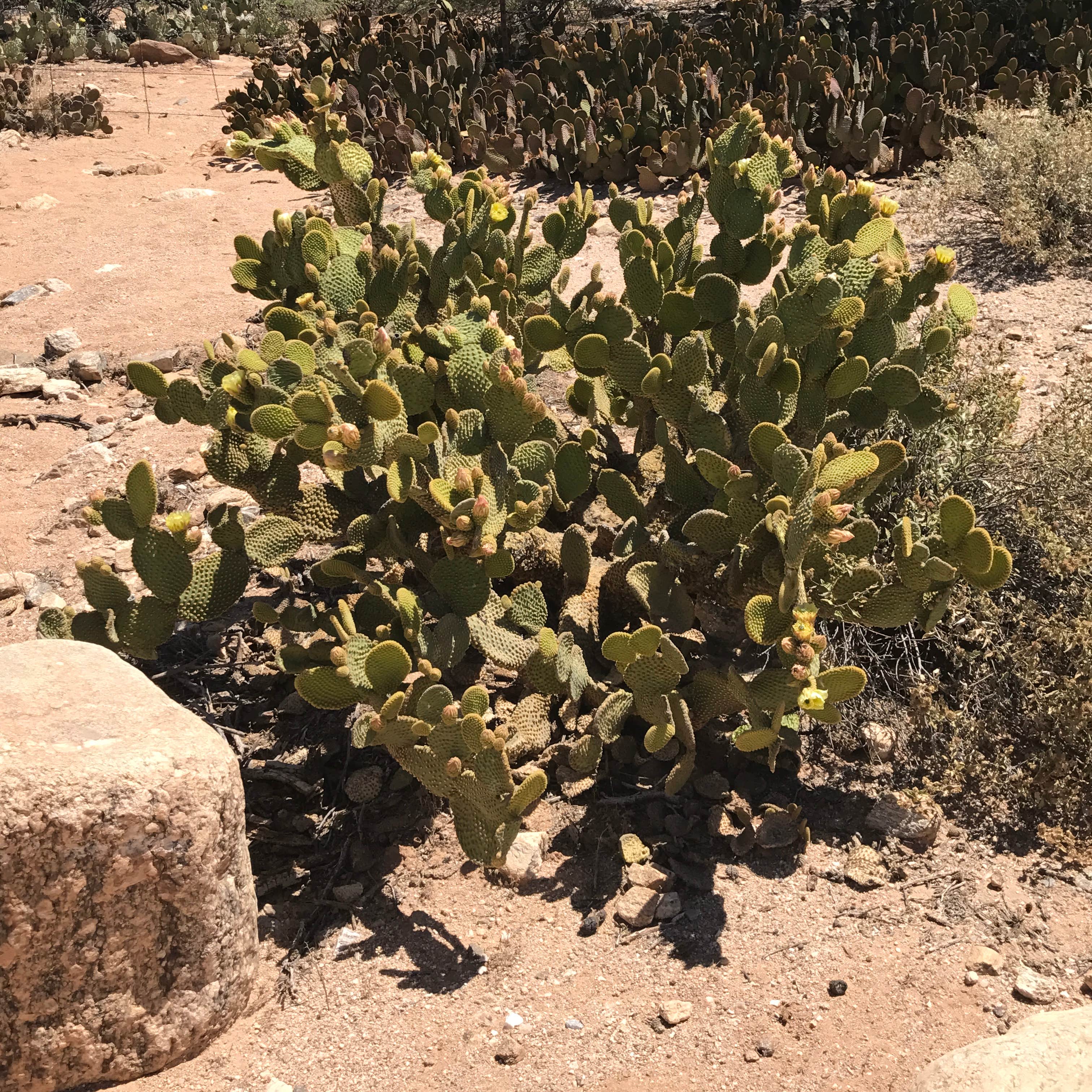
Manning Camp — Saguaro National Park
Manning Camp is Saguaro's highest and largest campground, near the summit of Mica Mountain at 7,920 feet. Access requires a 10+ mile hike (5,300 feet elevation gain) via multiple routes - popular approaches are from Turkey Creek (7.5 miles) or Douglas Spring (12.8 miles) trailheads. The reward is 6 well-spaced sites shaded by a lush ponderosa pine forest. Each site has a metal fire ring with grill, and a vault toilet is available. A reliable spring-fed water source flows near the historic Manning cabin almost year-round (treat before drinking). Even in summer, temperatures here remain comfortable, making it a sought-after escape from the desert heat. Campers often use Manning Camp as a base for exploring the high country or stargazing under incredibly dark skies.
Campgrounds Near Saguaro National Park

Molino Basin Campground
Molino Basin Campground is a Coronado National Forest campground in the Santa Catalina Mountains, about a 30-minute drive (11 miles) northeast of Saguaro East via the Catalina Highway. Open roughly October through April, Molino offers 37 sites (first-come, first-served) in a desert grassland basin at 4,500 feet. Sites have picnic tables and fire rings but no water or hookups, and vault toilets are provided. This campground's lower elevation makes it ideal for winter camping. Hiking and mountain biking trails radiate from Molino Basin, and its proximity to Tucson and Saguaro NP (just down the mountain) makes it a convenient spot - though bring plenty of water as none is available on-site.

General Hitchcock Campground
General Hitchcock Campground is a small, shaded campground tucked under pine and oak trees at ~6,000 feet in the Catalina Mountains (along the Catalina Highway, 20 miles from Tucson). It offers 11 primitive sites (first-come only) close together in a rocky canyon alongside Bear Creek. No drinking water is available (pack it in), but there is a vault toilet. The dense tree canopy and higher elevation provide a cool respite in summer. At night, campers enjoy the sounds of the creek (seasonal flow) and clear starry skies. The tight layout means less privacy, but the lovely wooded setting and access to nearby trails make this a hidden gem for tent campers looking to escape the desert heat.

Gilbert Ray Campground
Gilbert Ray Campground lies just outside Saguaro's west district in Tucson Mountain Park, approximately 2 miles from the park's west entrance. For those exploring the region, [Picacho Peak State Park camping](https://thedyrt.com/camping/arizona/arizona-picacho-peak-state-park) offers another desert camping option about 45 minutes north of Tucson. This popular county-run campground has 130 sites set among towering saguaros and desert shrubs, immersing campers in classic Sonoran Desert scenery. Each site has a picnic table and 30-amp electric hookup; water spigots and flush restrooms (no showers) are available, and a dump station is on-site. For a different experience, [Southern Arizona Guest Ranch](https://thedyrt.com/camping/arizona/southern-arizona-guest-ranch) offers ranch-style accommodations. Gilbert Ray sites are now reservation-only (no walk-ins) and cost around $20 per night, making Gilbert Ray an affordable basecamp. Campsites can accommodate tents or RVs up to 35 feet. With trailheads and the Desert Museum minutes away, and sunsets painting the cactus-covered hills, it's no surprise this campground fills quickly in peak season.
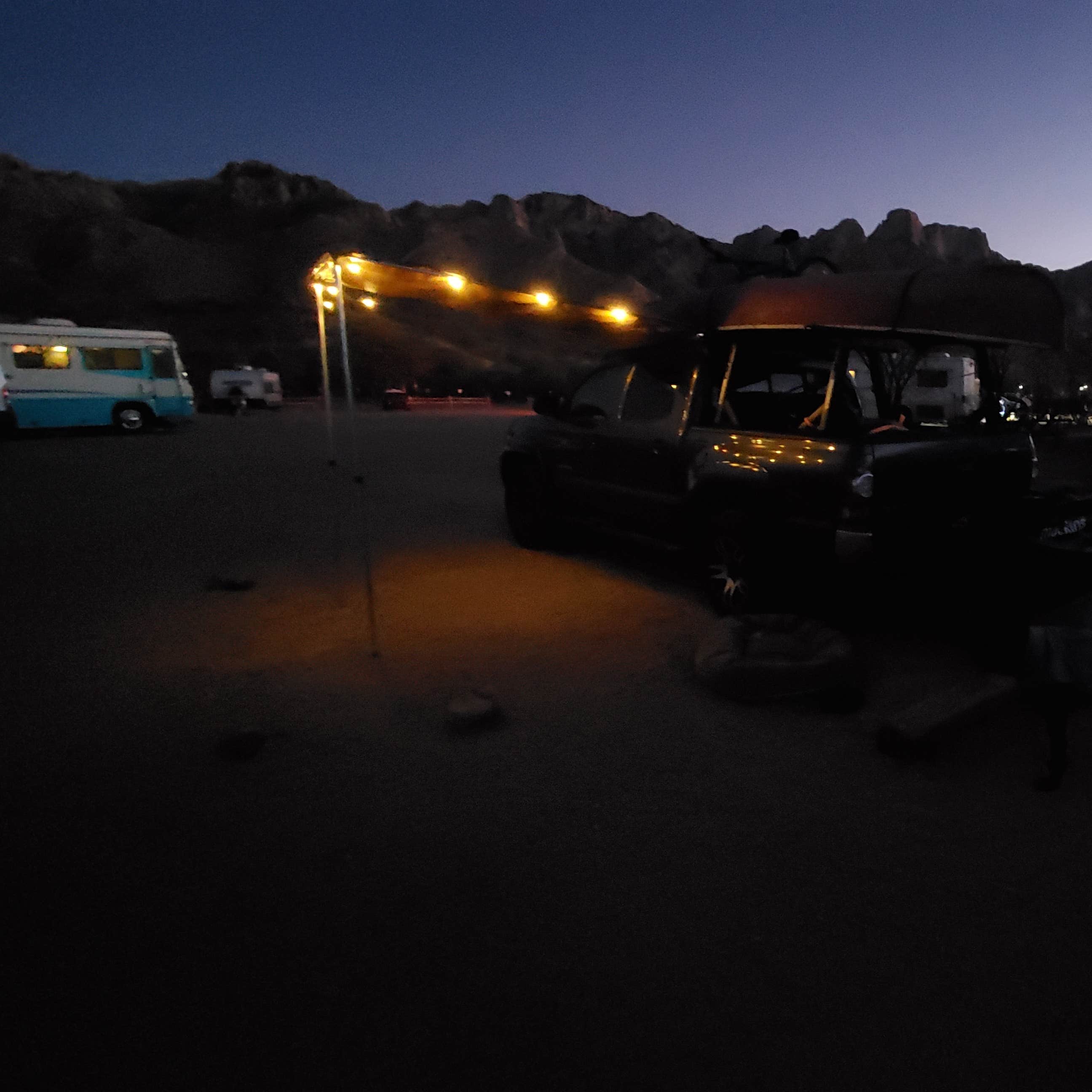
Catalina State Park Campground
Catalina State Park Campground is located north of Tucson (about 40 minutes from Saguaro West and East) at the base of the Santa Catalina Mountains. It features 120 spacious sites, each with water and electric hookups, picnic table, and BBQ grill. Modern restrooms with flush toilets and hot showers are available, and most sites can accommodate RVs and tents (some up to 60'). Reservations are required through Arizona State Parks, with nightly fees around $30. The campground's desert setting includes mesquite trees and views of 8,000-foot peaks above. Numerous hiking trails depart directly from the campground into scenic canyons (though many lack shade, so hike early). Catalina SP is family-friendly and open year-round, offering a great mix of convenience (shops and restaurants are 10 minutes away) and natural beauty.
Saguaro NP Campground Comparison Table
| Campground | Location & Sites | Cost & Reservations |
|---|---|---|
| Douglas Spring | East Saguaro Wilderness 3 sites | $8/night (permit) Recreation.gov |
| Grass Shack | East Saguaro Wilderness 2 sites | $8/night (permit) Recreation.gov |
| Juniper Basin | East Saguaro Wilderness 3 sites | $8/night (permit) Recreation.gov |
| Happy Valley Saddle | East Saguaro Wilderness 3 sites | $8/night (permit) Recreation.gov |
| Spud Rock Spring | East Saguaro Wilderness 3 sites | $8/night (permit) Recreation.gov |
| Manning Camp | East Saguaro Wilderness 6 sites | $8/night (permit) Recreation.gov |
| Gilbert Ray | West (Tucson Mtn Park) 130 sites | $20/night Pima County (online) |
| Catalina State Park | North of Tucson 120 sites | $30-35/night AZ State Parks (online) |
| Molino Basin | Santa Catalina Mtns 37 sites | $20/night First-come, cash/fee station |
| Gen. Hitchcock | Santa Catalina Mtns 11 sites | $20/night First-come, cash/fee station |
Saguaro Campground Amenities and Best Uses
Lower Elevation Campgrounds (Desert): Douglas Spring and Grass Shack sit at lower elevations with warmer temperatures, making them prime winter camping spots. Both are fairly open desert settings among grassland and cactus, so expect limited shade. Their easier access (6-10 mile hikes) and milder winter weather make them popular for off-season trips. However, water is unreliable at these sites - plan to carry sufficient water, especially in dry months. No campfires are allowed at either due to dry conditions. These low camps work well as starting or ending points on a multi-day trek or for campers seeking a one-night wilderness experience without extreme cold.
Mid-Elevation Ridges: Juniper Basin (along Tanque Verde Ridge) and Happy Valley Saddle (on the east flank near Rincon Peak) offer a balance of cooler temps and great views. Juniper Basin's ridge-top location grants panoramic vistas and is often praised for its sunrise/sunset scenery - perfect for photographers and those who want a "top of the world" feel. Happy Valley, on the other hand, is often used by backpackers aiming to summit Rincon Peak; it's the closest camp to the peak and a logical halfway point on rigorous loops. Both mid-level camps have some tree cover (junipers or pines) providing moderate shade. They allow campfires (when not under fire ban), which is welcome on chilly nights. Use these campgrounds in spring and fall for more moderate conditions - they'll be cooler than the desert floor but not as cold as the summit.
High Elevation Camps: Spud Rock Spring and Manning Camp are high in the Rincon Mountains and offer much cooler temperatures in summer - often 20-30°F cooler than Tucson. These sites are best for avoiding the intense summer heat; in fact, Manning Camp is frequented by summer backpackers precisely for its shaded pine forest and near-guaranteed water. In winter, expect snow cover and very cold nights at both (sub-freezing temperatures are common), so they're recommended only for well-prepared, experienced winter campers. Manning Camp's six sites provide the most amenities (fire rings, reliable water, ranger cache nearby) and space, making it a hub for longer trips. Spud Rock is more remote and smaller, but campers love its serenity and the stargazing opportunities in an open meadow. High camps are the go-to choice in summer or late spring, and they're a reward for those willing to tackle the steep hikes required to get there.
Front-Country Bases: For those who prefer camping near their vehicle or RV, the nearby developed campgrounds serve different needs. Gilbert Ray Campground is ideal for tent camping in Saguaro and RV camping near Saguaro National Park wanting a true Sonoran Desert immersion - campers wake up among giant saguaros and can hop on west district trails within minutes. It's great for photographers (sunsets over cactus) and folks doing day hikes in Saguaro West, but note it lacks showers and can have some road noise from nearby parks and roads. Catalina State Park works well for families and RV travelers: it offers hookups, potable water, and even showers, plus easy nature trails and picnic areas, all with a gorgeous mountain backdrop. Catalina is a good choice if you want some comfort and still be within a short drive of either section of Saguaro NP. Molino Basin and General Hitchcock in the Catalinas are primitive but offer cooler overnights and are convenient for splitting a trip between Saguaro NP and Mt. Lemmon adventures - use these for a quiet, natural setting (just remember to bring water). Each nearby campground has its niche, with some offering horse-friendly camping near Saguaro, whether it's quick park access, full amenities, or relief from summer heat.
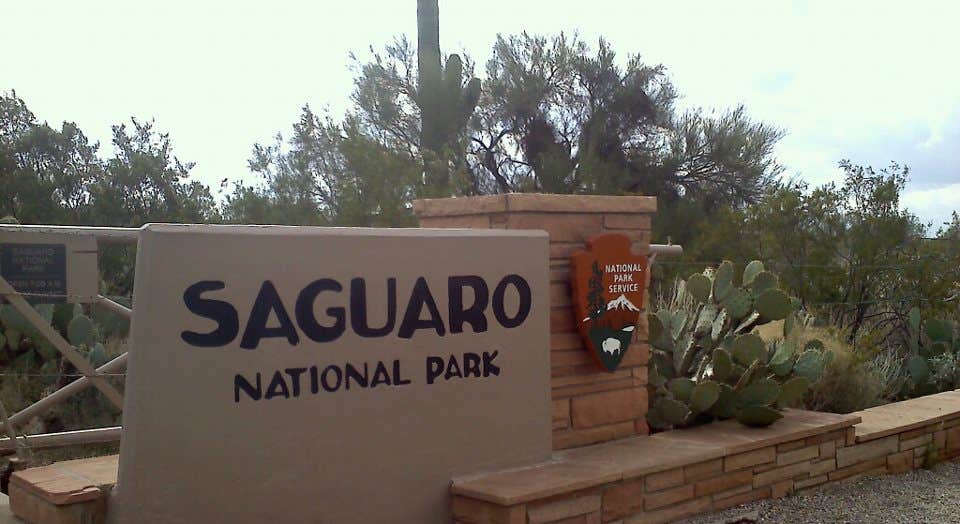 Photo by Daniel S
Photo by Daniel S
Planning Your Saguaro Camping Trip 
When to Visit Saguaro
| Season | Temperatures | Camping Conditions |
|---|---|---|
| Spring (March-May) | Desert lows 50-60°F, highs 75-95°F Mountains: 50s°F days, 30s°F nights (snow lingering in March) | Prime season: Mild to hot days and cool nights Wildflowers & cacti bloom (late March-April) All campgrounds accessible (snow mostly gone by late April) |
| Summer (June-August) | Desert lows 75-85°F, highs 100-110°F Mountains: 70-80°F days, 45-55°F nights | Very hot at low elevations: Not recommended for low desert camping High country camps provide relief (cooler temps) Monsoon storms July-Aug with lightning & flash floods - plan around daily afternoon thunderstorm risk |
| Fall (September-November) | Desert lows 60-70°F, highs 85-100°F (cooling by Nov) Mountains: 60s°F days early fall, down to 40s°F days by Nov; nights freezing by Nov | Excellent camping conditions, especially Oct-early Nov Summer rains subside; clear skies and pleasant temps Late fall brings cold nights at higher camps (possible snow by late Nov) |
| Winter (December-February) | Desert lows 35-45°F, highs 60-70°F Mountains: 40-50°F days, 15-30°F nights (snow common) | Low elevation camping is comfortable and uncrowded High elevation campgrounds often snowbound or very cold Shorter daylight - plan hikes accordingly; great time for desert day hikes |
Spring (March-May): Spring is one of the best times to camp in Saguaro. By late March, desert wildflowers carpet the bajadas and the giant saguaros begin budding (they bloom in May). Daytime highs climb from the 70s into the 90s°F as April and May progress, but nights remain comfortably in the 50s-60s°F at low elevations. Higher elevations are cooler; early spring might still have patches of snow in the Rincons, but by May the high country is accessible. Most campers target April for ideal weather - warm but not too hot, and generally dry before summer monsoons. Be prepared for strong sun; bring sun protection for daytime hikes. Spring is also a popular time, so while backcountry permits are usually attainable, holiday weekends (like spring break or Easter) can see increased demand.
Summer (June-August): Summer brings extreme heat to Saguaro's lower elevations. In June (typically the driest month), desert highs routinely exceed 100°F and the sun can be punishing - not a great time for tent camping on the desert floor. By July and August, the North American Monsoon sweeps in humidity and nearly daily afternoon thunderstorms. These monsoon storms are dramatic, with lightning and torrential rain that can cause flash floods in canyons and washes. If you do camp in summer, plan on high elevation sites like Manning Camp or Spud Rock where daytime highs in the 70s-80s°F offer relief. Start hikes before sunrise to beat the heat and reach camp before storms (aim to be off trails by early afternoon). Despite the challenges, experienced backpackers still venture out in summer to enjoy green desert landscapes and spectacular lightning shows - but exercise extreme caution, carry plenty of water and electrolytes, and never underestimate the heat. Casual campers and RVers often opt for nearby mountain campgrounds or skip summer entirely.
Fall (September-November): Fall is another prime season for Saguaro camping. Early September remains quite warm (often 90s°F in the day) but by October, the desert cools into the 80s°F or lower with crisp, pleasant nights in the 50s°F. The summer rains leave the desert verdant, and occasional autumn wildflowers bloom. Wildlife is active, preparing for winter - you might hear the bugling of mule deer or see more javelina foraging. High country camps have excellent conditions in September (60s-70s°F day, 40s°F night). As November arrives, temperatures drop further; higher elevations can dip below freezing at night and even see the first dustings of snow. All campgrounds typically remain accessible until significant snow falls (usually late November or December). Fall offers thinner crowds than spring, especially after Labor Day. It's a fantastic time for both backpacking and front-country camping - just bring layers for the wide temperature swings, and enjoy sunsets that come a bit earlier (around 5:30-6:00 PM by November).
Winter (December-February): Winter is mild in the low desert and can be an enjoyable time to camp, particularly at front-country sites or lower backcountry camps. Day highs in the 60s°F feel pleasant for hiking among the saguaros, and the cooler temps mean almost no snakes or scorpions out and about. Nights, however, do get cold - near freezing on the desert floor and well below freezing higher up. The Rincon Mountain camps (Juniper Basin, Happy Valley, Spud Rock, Manning) often receive snow; Manning Camp can accumulate substantial snowpack in winter, making it accessible only with proper gear (or not at all after heavy storms). Backpackers in winter typically stick to Douglas Spring or other lower elevation wilderness sites. One benefit of winter: it's very quiet - you may have campgrounds entirely to yourself. Just pack a warm sleeping bag and prepare for short daylight hours.
Saguaro Reservation Systems Explained
All in-park camping in Saguaro requires a wilderness permit - there are no drive-up sites to claim, so you must plan ahead. The permit system is relatively straightforward compared to busier parks:
Reservations via Recreation.gov: Saguaro's backcountry campground permits are booked online through Recreation.gov. New dates are released on a rolling basis (generally one month at a time). You can reserve permits up to about 2 months in advance of your trip. Unlike some national parks, you typically won't face frenzied competition the minute reservations open - many Saguaro permits remain available weeks or days beforehand, except perhaps around holiday weekends or spring break.
Permit Details: When booking, you will select the specific campground and night(s) for your stay. Each permit is good for one campsite (up to 6 people) at that campground. The fee is $8 per site per night, plus a small Recreation.gov processing fee. There is a trip itinerary form to fill out with your planned route, just so park rangers have your info on file. Be sure to print or download your permit confirmation; there is no physical permit to pick up, but you should carry proof of your reservation.
No Walk-Up Permits: Saguaro no longer issues walk-in backcountry permits at the visitor centers. All permitting is handled online. This means spontaneous backpacking the day-of is only possible if you have cell service or stop by a place with internet to book a permit (the visitor center staff can sometimes assist if slots are open). It's best to reserve ahead if you know your dates.
Cancellations and Changes: If your plans change, you can cancel or modify your reservation on Recreation.gov. The system will charge a small cancellation fee (around $10) and will refund the rest if you cancel far enough in advance. Permits in Saguaro are seldom fully booked out, so there's some flexibility - but as a courtesy, cancel permits you won't use so another camper can grab the spot.
Group Size and Nights: Group size is limited to 6 persons per site (and only one party is allowed per campsite). You can stay up to 5 consecutive nights at the same campground and up to 10 nights total on one trip. There are no designated "group" campgrounds in Saguaro - large groups must split up and obtain multiple permits.
Saguaro Campground Costs and Budgeting
| Campground Type | Nightly Cost | Key Features |
|---|---|---|
| Wilderness Backcountry Camps | $8 per site | All six in-park camp areas; permit required; no facilities beyond toilet; max 6 people per site |
| Developed Campgrounds (Public) | $10-$35 | Outside park (e.g., Gilbert Ray $20 with electric, Catalina SP ~$35 with hookups, Nat'l Forest ~$20 primitive) |
| Private RV Parks | $30-$60 | Full-hookup RV resorts around Tucson; showers, pools, Wi-Fi often available; good for non-backpackers |
Additional Costs and Budget Tips
Park Entrance Fees: Remember that camping in Saguaro still requires paying the park entry fee. It's $25 per vehicle (good for 7 days, both districts) or $45 for an annual Saguaro National Park pass. If you have an America the Beautiful National Parks Pass ($80/year), that covers entry.
Camping Permit Fees: The $8/night backcountry fee is in line with many parks' backcountry charges. Note that this is per campsite, not per person - a great deal for small groups. For developed campgrounds outside the park, budget $20-$35 a night; Catalina State Park, for example, charges around $35 for electric/water sites.
Free Camping Alternatives: On a tight budget? Dispersed camping around Saguaro is possible on nearby public lands. For example, Redington Pass dispersed camping in Coronado National Forest offers free primitive camping along dirt roads. Dispersed camping near Tucson provides additional no-cost options for budget-conscious campers.
Essential Gear for Saguaro Camping
Desert camping in Saguaro spans a wide range of environments. Preparing for both hot and cold, dry and wet conditions is key:
Shelter and Sleeping: Tent with good ventilation, ground cloth/footprint, sleeping bag rated 20-30°F, sleeping pad with R-value 3-4, extra blankets for cold nights.
Water Management: Carry capacity for at least 1 gallon per person per day - more in summer. Hydration bladders, collapsible jugs, water filter or treatment tablets, electrolyte mixes.
Clothing: Sun protection layers (wide-brim hat, sunglasses, UPF-rated clothing), insulating layers for cold nights, rain gear for monsoon season, sturdy boots or trail shoes, camp shoes.
Kitchen and Food: Backpacking stove and fuel, lightweight cookware, bear canister or odor-proof bags, trash bags for pack-out, minimal-water meal planning.
Safety and Navigation: Topographic map, GPS with offline maps, headlamp with extra batteries, comprehensive first aid kit (including tweezers for cactus spines), sunscreen SPF 30+, satellite messenger for emergencies.
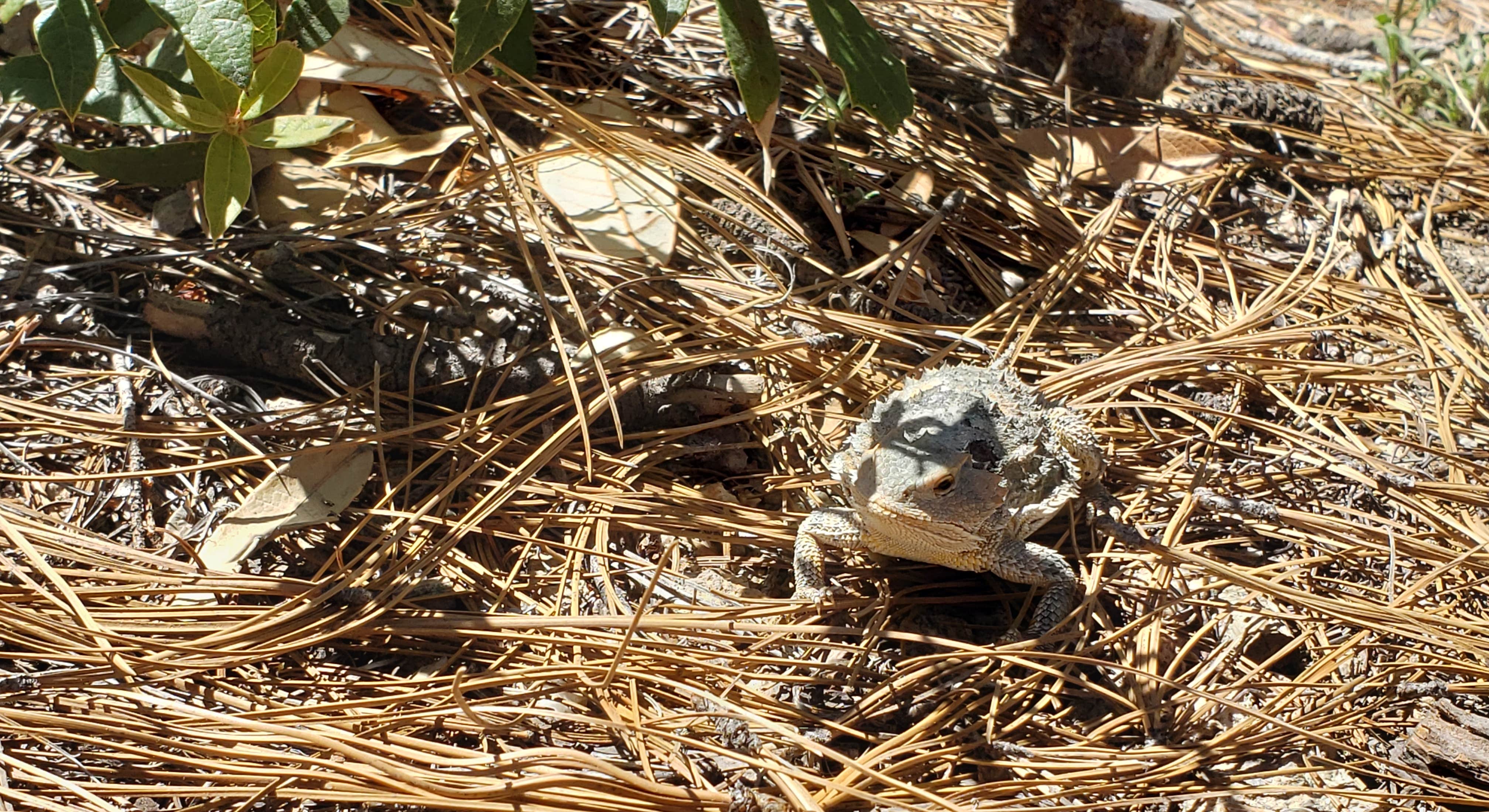 Photo by David K
Photo by David K
Wildlife Safety and Park Regulations 
Wildlife Safety in Saguaro
Saguaro National Park's desert ecosystem is home to creatures big and small - most are harmless if left alone, but some require special caution. The primary wildlife concerns revolve around venomous creatures and territorial animals like javelina.
Venomous Creatures: Several rattlesnake species live in the park. They are most active in warmer months, especially at dawn and dusk. Always watch where you step and place your hands. Give snakes at least 6+ feet of space. Scorpions and spiders generally avoid humans - shake out boots and clothing every morning. Centipedes and other creatures come out at night; keep tents zipped.
Larger Wildlife: Javelinas are pig-like mammals common at low elevations. They can be defensive if cornered or fed. Store food securely and keep 25+ yards distance. Coyotes are generally shy - you'll likely only hear them howling at night. Mountain lions exist but sightings are extremely rare. If encountered, don't run - make yourself look big and back away slowly.
Food Storage: Use provided bear boxes where available (Manning Camp and others) or bring portable canisters. In Saguaro's backcountry, the main goal is deterring rodents, coatis, and javelinas. Never leave food scraps accessible.
Park Regulations and Etiquette
| Regulation Category | Specific Rules | Penalties |
|---|---|---|
| Campfires | Allowed only in provided fire rings at Manning, Juniper, Happy Valley, Spud Rock No fires at Douglas Spring or Grass Shack Use only dead wood; never cut live vegetation | Fines up to $500 Wildfire suppression costs Park expulsion |
| Quiet Hours | 10:00 PM to 6:00 AM in all campgrounds Sound carries far in desert nights | Warnings then citations Possible campsite revocation |
| Pets | No pets on trails or in wilderness Pets allowed only on roadways and picnic areas on leash | Minimum $75 fine Asked to leave backcountry |
| Wildlife Interaction | Do not feed wildlife Stay 50+ yards from larger animals | Fines for feeding/harassment Wildlife management actions |
Additional Regulations: Pack out all trash. Use vault toilets or dig cat holes 6-8 inches deep, 200+ feet from water. Pack out toilet paper. Stay on established trails below 4,500 feet elevation. No carving into cacti or rocks. No drones. Discharge of firearms prohibited.
 Photo by David K
Photo by David K
Beyond the Campground: Activities and Exploration 
Day Trips from Saguaro Campgrounds
From Rincon Mountain District (East): From Manning Camp, hike to Mica Mountain's summit (8,664 feet) - just 1 mile from camp with panoramic views. From Happy Valley Saddle, tackle Rincon Peak (8,482 feet) about 4 miles up with 1,800 feet elevation gain. From Juniper Basin, continue along Tanque Verde Ridge for expanding vistas.
From Tucson Mountain District (West): Most campers stay at Gilbert Ray Campground and drive into the park. Popular day trips include the Bajada Loop Drive through dense saguaro forests, Valley View Overlook Trail (0.8 miles round-trip) for hilltop vistas, and Signal Hill Picnic Area to see Hohokam petroglyphs. Wasson Peak (4,687 feet) offers a 7.5-mile round-trip summit hike with views across Tucson.
From Nearby Mountain Campgrounds: Campers at Molino Basin or General Hitchcock can mix high-elevation forest activities with desert exploration. Hike Sabino Canyon for flowing creeks and natural pools, then visit Saguaro for sunset ranger programs.
Top Hiking Trails Near Campgrounds
| Trail Name | Difficulty & Distance | Key Features |
|---|---|---|
| Valley View Overlook (West) | Easy 0.8 miles RT | Panoramic lookout over saguaro plains; best at sunrise/sunset |
| Bridal Wreath Falls (East) | Moderate 5.6 miles RT | Seasonal waterfall in Rincon foothills; wildflowers after rains |
| Wasson Peak via King Canyon (West) | Moderate/Strenuous 7.8 miles RT | Highest point in Saguaro West; summit views of Tucson; old mine ruins |
| Tanque Verde Ridge to Juniper Basin (East) | Strenuous 8-11 miles RT | Steady ascent from desert to pine-oak zone; continuous views |
| Rincon Peak (East) | Strenuous 16 miles RT | Challenging summit (8,482'); 4,000+ ft elevation gain; 360-degree views |
Water Activities in Saguaro
Saguaro is a desert park with no lakes or permanent rivers. Traditional water activities like boating or swimming don't exist within park boundaries. However, seasonal waterfalls appear after winter rains or monsoons. Bridal Wreath Falls in the east district transforms into a cascading waterfall with pools at its base in late winter/early spring.
Flash Flood Caution: During monsoon season (July-August), flash floods are a real danger. Never camp in washes or stream beds. If hiking in canyons and storms approach, move to high ground immediately.
Nearby Water Recreation: Sabino Canyon (north of Saguaro East) often has flowing creek for wading. Tanque Verde Falls (east of park) creates natural pools for swimming after storms. Catalina State Park sometimes has small streams in winter/spring.
 Photo by Kelly Z
Photo by Kelly Z
The Dyrt Community Insights 
Ranger Recommendations for Saguaro NP
The Dyrt's Ranger team offers these insider tips for the Saguaro area:
Gilbert Ray Campground - Best Sites: "Try to snag sites in Loop A or B for the most immersive desert feel," suggests one Dyrt Ranger. At Gilbert Ray Campground, sites along the outer edge of Loop A have unobstructed sunset views and wildlife sightings. Gilbert Ray is reservation-only and fills on weekends from October through April - book early.
Hidden Gem Campground: "General Hitchcock Campground doesn't get enough love," one Ranger notes. This tiny campground stays much cooler than Tucson (often 20°F cooler in summer). The tranquil creekside setting offers excellent stargazing.
Free Camping Favorite: Redington Pass dispersed camping is an awesome zero-dollar option. "Drive at least a couple of miles past the busy shooting area. After that, it's quiet with views down the valley. Sunset up there is phenomenal."
Top-Rated Saguaro Campsites from The Dyrt Community
| Category | Top Pick & Rating | Key Highlights |
|---|---|---|
| Highest-Rated Developed Campground | Catalina State Park 4.7/5 stars | Spacious sites with electric/water, clean showers, mountain backdrop, easy Tucson access |
| Best Desert Experience | Gilbert Ray Campground 4.5/5 stars | Camp among saguaros, dark night skies, quick drive into Saguaro West, affordable |
| Best Backcountry Camp | Manning Camp (Saguaro NP) 4.8/5 stars | Cool pine forest in summer, reliable spring water, stellar basecamp for Rincon hikes |
| Top Free Dispersed Spot | Redington Pass (NF) 4.4/5 stars | Free camping with desert views, space for RVs or tents, true off-grid feeling |
Community Insights and Recommendations for Saguaro
Gilbert Ray Praise: Campers praise Gilbert Ray for "camping in a cactus forest" with 360° saguaro views. Many reviews mention hearing coyotes yipping at night. The common caveat: no water hookups or showers - bring lots of water.
Catalina State Park Convenience: The Dyrt community recommends Catalina SP for mixing nature and comfort. Families appreciate roomy sites, clean bathrooms, and the short Romero Ruins trail showing Hohokam history.
Backcountry Rewards: "It's hard work lugging a full pack up to Manning Camp, but the reward is unbelievable - a whole different world up there." The drastic transition from cactus desert to pine forest amazes hikers. The Milky Way on moonless nights is jaw-dropping.
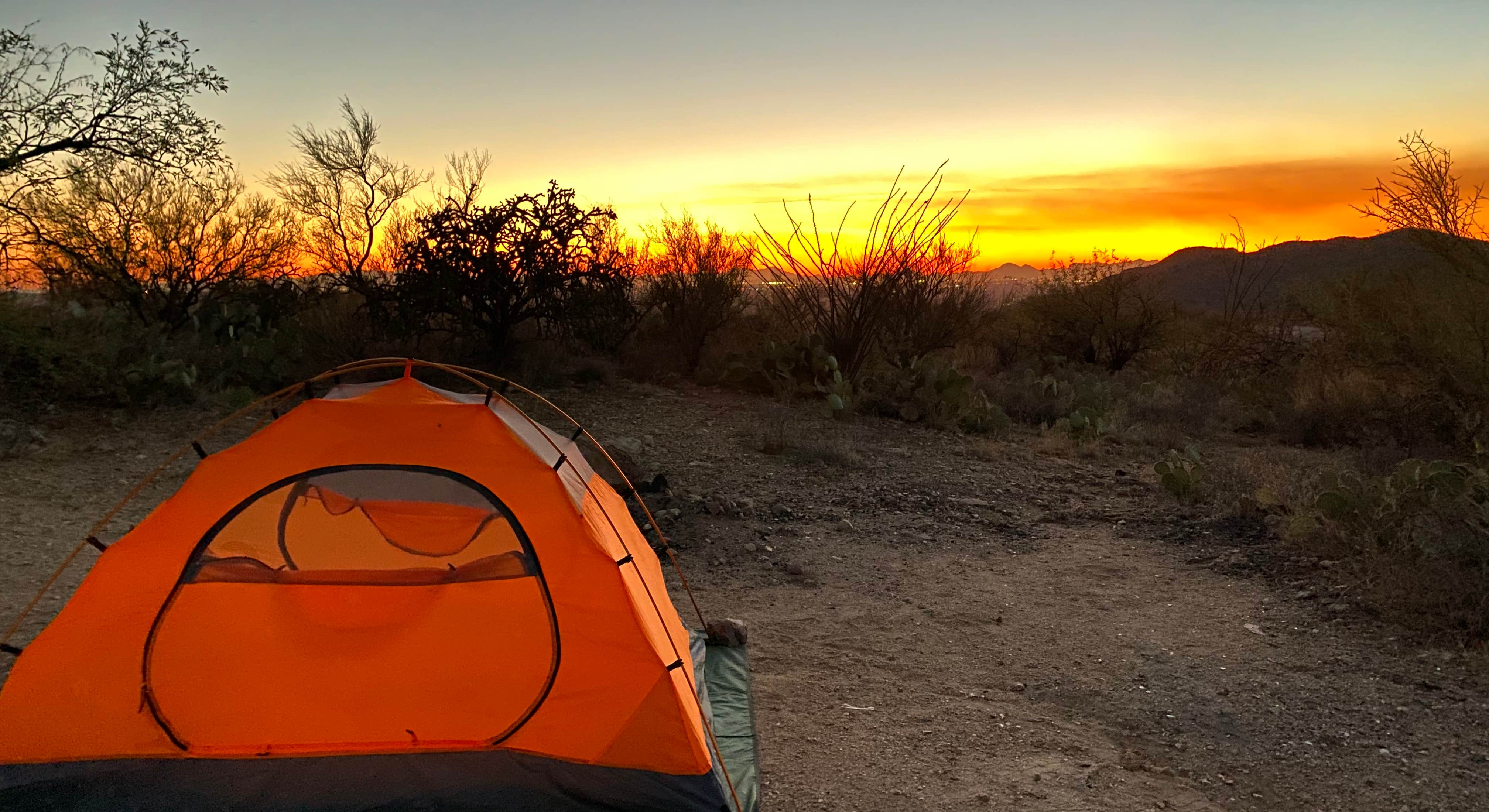 Photo by Colin R
Photo by Colin R
Saguaro NP Responsible Camping Practices 
Camping in the Sonoran Desert requires thoughtful practices to protect this fragile environment:
Pack It In, Pack It Out: Take everything back out - including micro-trash like bottle caps and fruit peels. These don't decompose quickly in arid climates. Bring multiple ziplock bags for trash. There are no trash cans in the backcountry.
Use Established Campsites and Trails: Always use existing tent pads or impacted areas. If dispersed camping near Saguaro on Forest Service land, choose previously-used sites. Stay on official trails - cutting switchbacks damages vegetation that takes decades to recover.
Fire Safety: Fire restrictions are common in southern Arizona. When fires are allowed, keep them small in provided rings. Use only dead, downed wood. Never leave fires unattended. Drown with water, stir ashes, drown again until cold.
Wildlife and Plant Respect: Saguaro cacti can live two centuries - treat them with reverence. Don't carve into cactus skin or drape gear over branches. Never feed wildlife. Store food securely to avoid attracting animals.
Water Conservation: Water is precious in the desert. Minimize water use so springs remain for wildlife. Use minimal or no soap. Scatter dishwater 200+ feet from water sources. Conserve water you've brought - use leftover cook water to douse fires.
Frequently Asked Questions 
When is the best time to camp in Saguaro National Park? Spring (March-April) and fall (October-early November) are ideal. Spring brings wildflower blooms and comfortable temps (70s-80s°F days, 50s-60s°F nights). Fall offers similar conditions with thinner crowds. Winter is good for lower elevations with mild days (60s°F) but cold nights. Summer is not recommended except at high-elevation camps due to extreme heat and monsoon storms.
Are there any drive-up campgrounds inside Saguaro National Park? No - Saguaro has no developed campgrounds accessible by car within park boundaries. All six in-park campgrounds are hike-in backcountry sites only. For car camping or RV camping near Saguaro, stay at Gilbert Ray Campground, Catalina State Park, or private RV resorts around Tucson and full-hookup RV parks near Saguaro.
How do I get a permit for backcountry camping? Permits are obtained through Recreation.gov. Search for "Saguaro Wilderness Permits" to select your entry date, number of nights, and campground(s). You'll pay $8 per night online and receive confirmation. Print your confirmation or save it on your phone. No physical permit pickup is required.
Can I camp anywhere I want in the park with my permit? No - your permit allows camping only at designated wilderness campgrounds listed on your permit. You must hike to one of the 6 camp areas (Douglas Spring, Grass Shack, Juniper Basin, Happy Valley, Spud Rock, Manning Camp). Random dispersed camping is not allowed inside the park. For flexible dispersed camping, go to adjacent national forest land outside the park.
Are campfires allowed at backcountry campsites? Douglas Spring and Grass Shack do not allow campfires at any time. The other four camps (Happy Valley, Juniper Basin, Spud Rock, Manning Camp) generally allow fires when no fire bans are in effect. Manning Camp has metal fire rings at each site. Always check current fire restriction status. Use only dead, downed wood.
How much water should I carry? At least one gallon (3.7 liters) per person per day in warmer weather - more if very hot. In hotter months, people often carry 5-6 liters for a full day's hike. Plan around known water sources: Manning Camp usually has water you can filter. Destinations like Rincon Peak have no water - haul every drop you'll need. Always carry extra.
What wildlife dangers should I be prepared for? Main concerns are rattlesnakes and scorpions. Rattlesnakes are generally not aggressive - give them 6+ feet distance. Wear boots and use flashlight at night. Scorpions sting is painful but not typically life-threatening - shake out bedding and clothing. Mountain lions exist but sightings are extremely rare. Javelinas can be defensive - store food securely and keep distance. Overall, serious wildlife incidents are very rare with proper caution.
Can I bring my dog camping or hiking in Saguaro? No for the backcountry. Pets are not allowed on any park trails or in wilderness areas. Pets (on leash) are only permitted in road-adjacent areas like picnic grounds and parking lots. If camping near Saguaro at Gilbert Ray or Catalina State Park, pets are usually allowed there. But inside Saguaro NP, you must leave pets behind.
Planning Resources
Essential Saguaro Links
- The Dyrt Campground Finder: Saguaro Campsites - Reviews and photos for Saguaro NP from fellow campers for in-park and nearby sites
- Saguaro National Park Official Website - Current park conditions, closures, regulations, maps, and alerts
- Recreation.gov - Saguaro Wilderness Permits - Online permit reservation system for all in-park backcountry campgrounds
- Pima County Camping (Gilbert Ray) - Gilbert Ray Campground reservation and information
- Catalina State Park Camping - Arizona State Parks page for Catalina SP campground details and reservations
- Coronado National Forest - Camping in Coronado NF around Tucson including Mount Lemmon campgrounds
Saguaro NP Reservation Timeline
| Time Period | Reservation Task | Platform/Details |
|---|---|---|
| 2-3 Months Before Trip | Book Saguaro backcountry permits | Recreation.gov - Reserve wilderness campsites (rolling 2 months ahead) |
| 1-2 Months Before | Reserve front-country campgrounds/RV parks | Pima County for Gilbert Ray; AZ State Parks for Catalina SP; Book Tucson lodging if needed |
| 2 Weeks Before | Check for updates | Review NPS alerts for trail closures, water status, fire restrictions; Confirm reservations |
| 1 Week Before | Gear and supplies prep | Check hydration system, sun gear; Buy extra water containers, blister care, etc. |
| Day Before | Water and weather check | Fill water jugs in Tucson; Check forecast for Tucson AND Rincon Mountains |
Saguaro Camping Checklist
Reservations and Permits: Backcountry permit (printout or saved on phone), campground reservations outside park, National Park entrance pass, photo ID, parking tag if required.
Camping Gear: Backpacking tent with stakes and guylines, ground tarp/footprint, sleeping bag rated 20-30°F, sleeping pad R-value 3-4, headlamp with extra batteries, multi-tool or knife, camp towel.
Kitchen Items: Backpacking stove and fuel canisters, lighter and waterproof matches, cooking pot with lid, eating utensils, biodegradable soap, trash bags, ample water containers (4-6 liters capacity per person), water filter/purifier with backup tablets, food for all meals plus extra, bear canister or odor-proof bags.
Clothing: Moisture-wicking shirts (UPF sun shirts), hiking pants, insulating layer (fleece or puffy jacket), rain jacket, warm hat and gloves, sun hat, Buff or bandana, hiking socks (bring extras), sturdy hiking boots or trail shoes, camp shoes, sleepwear.
Safety and First Aid: First aid kit (bandaids, gauze, antibiotic ointment, ibuprofen, antihistamine, moleskin, tweezers for cactus spines), whistle, map and compass, GPS or offline maps on phone, sunscreen SPF 30+, lip balm with SPF, insect repellent, emergency blanket, fire starter, personal locator beacon or satellite messenger (recommended), hand sanitizer.
Hygiene and Misc: Toilet paper (double-bag for pack-out), trowel for cat holes, sanitation wipes, toothbrush and toothpaste, menstrual supplies if applicable, ear plugs, cash/credit card and ID, camera or phone with protective case, binoculars, positive attitude and flexibility.
By thoroughly planning and packing with the desert environment in mind, you set yourself up for an amazing Saguaro National Park adventure. Enjoy those colorful sunsets, the chorus of coyotes at night, and the towering silhouettes of saguaros against the stars - there's nothing quite like camping in this iconic Southwest landscape. Happy trails and clear skies!

